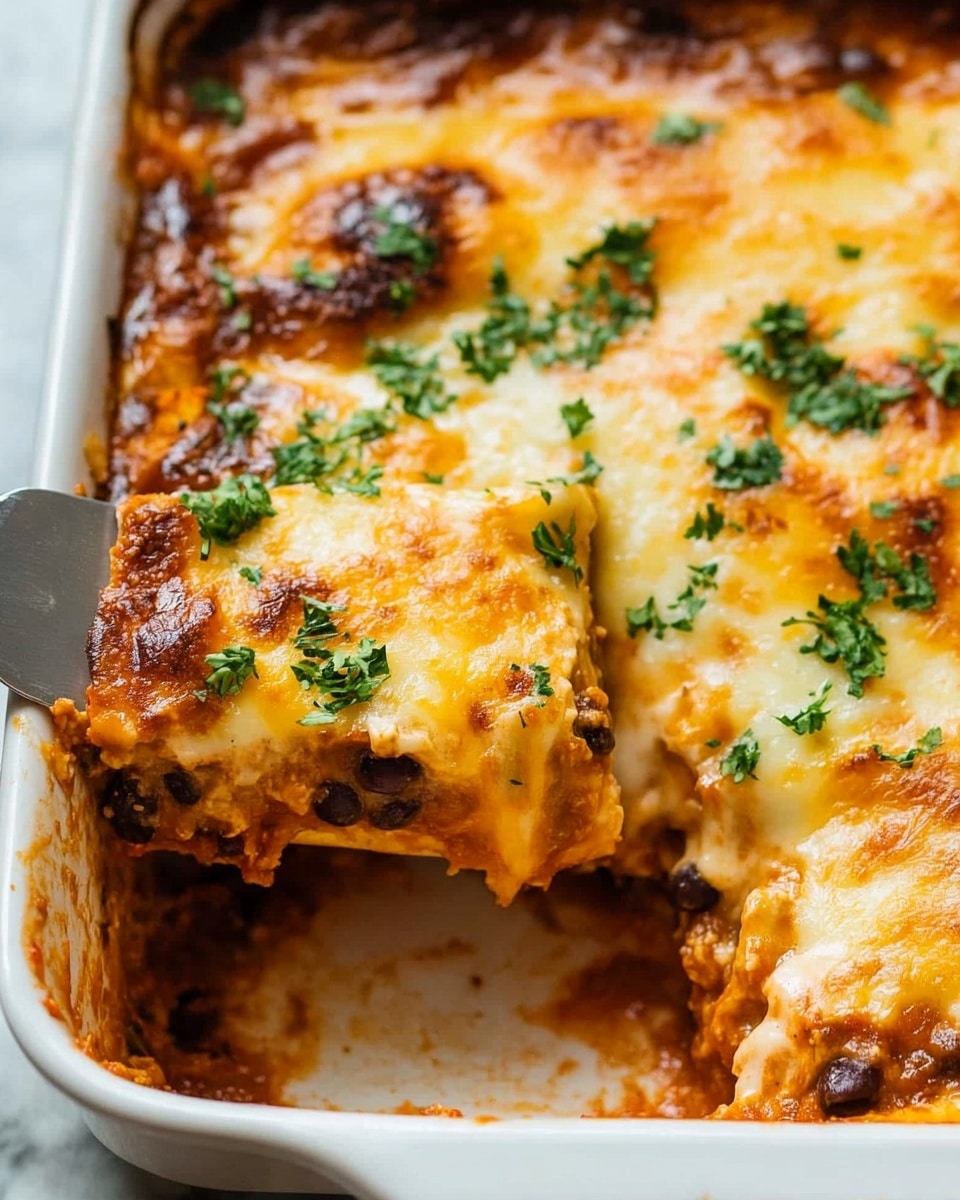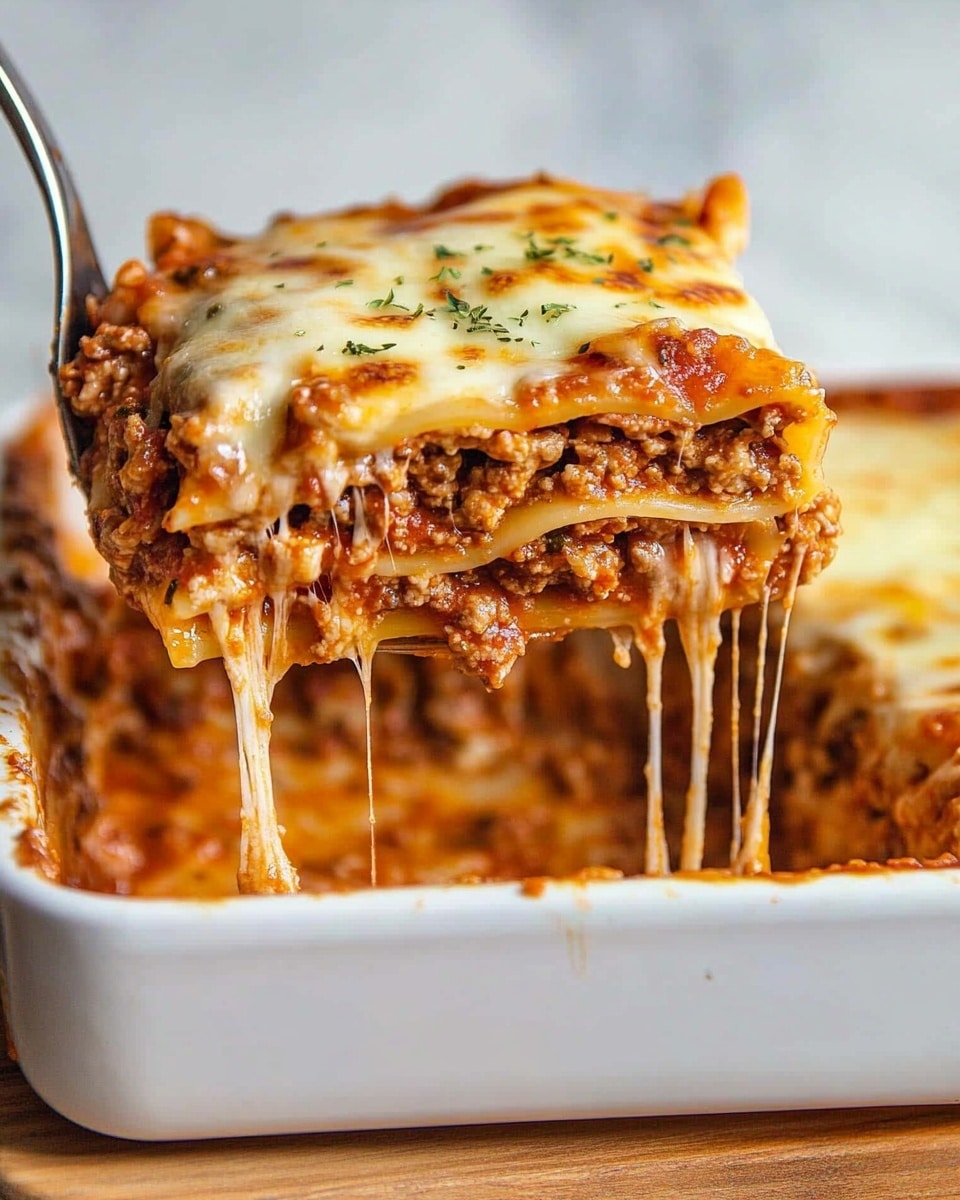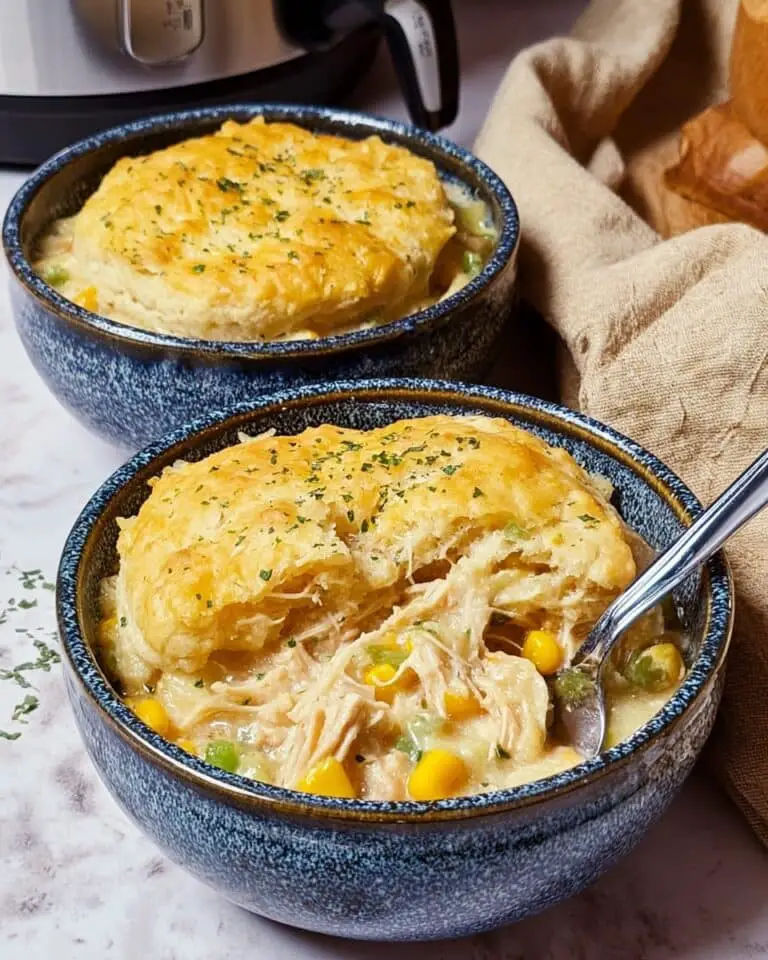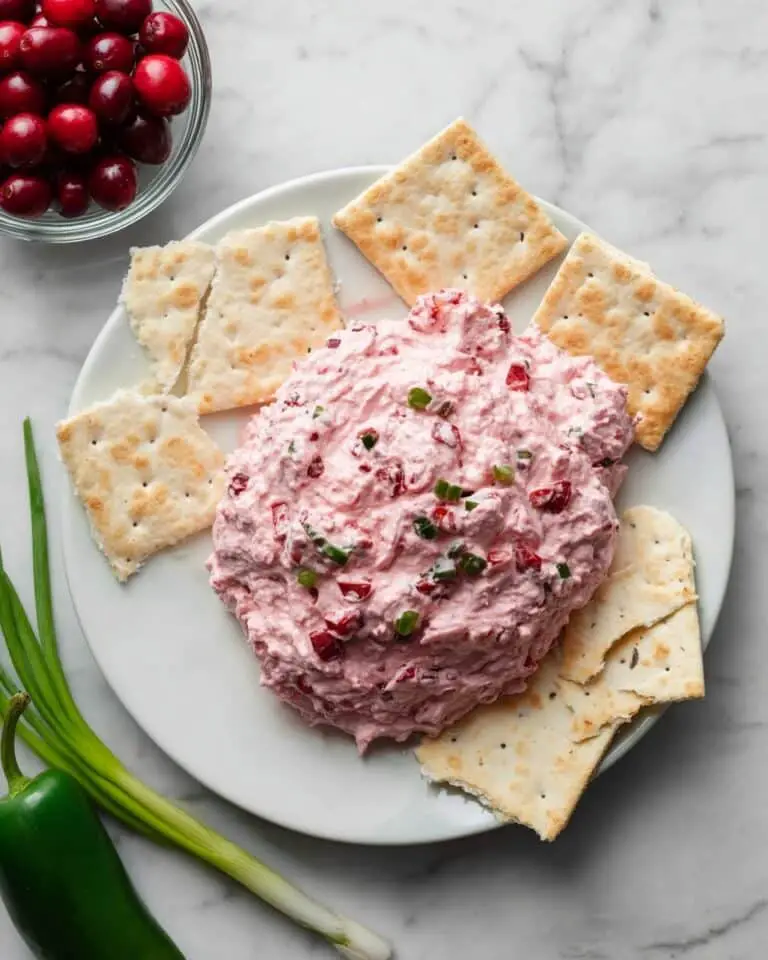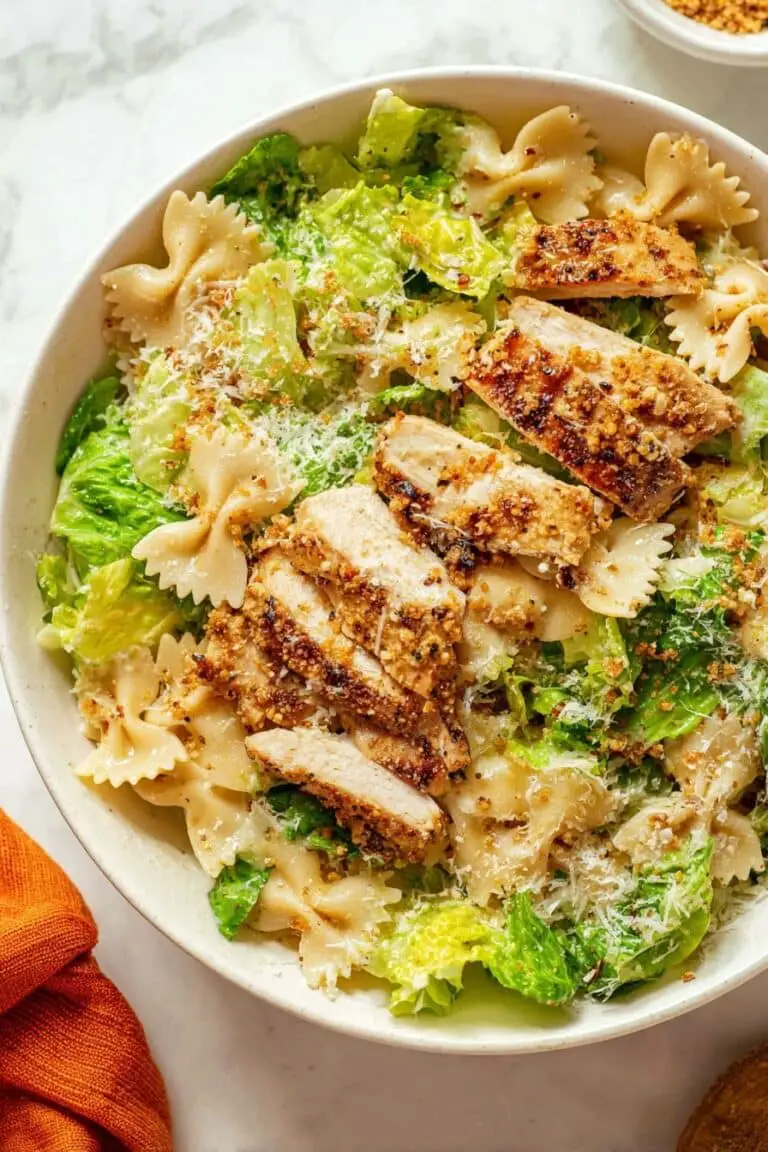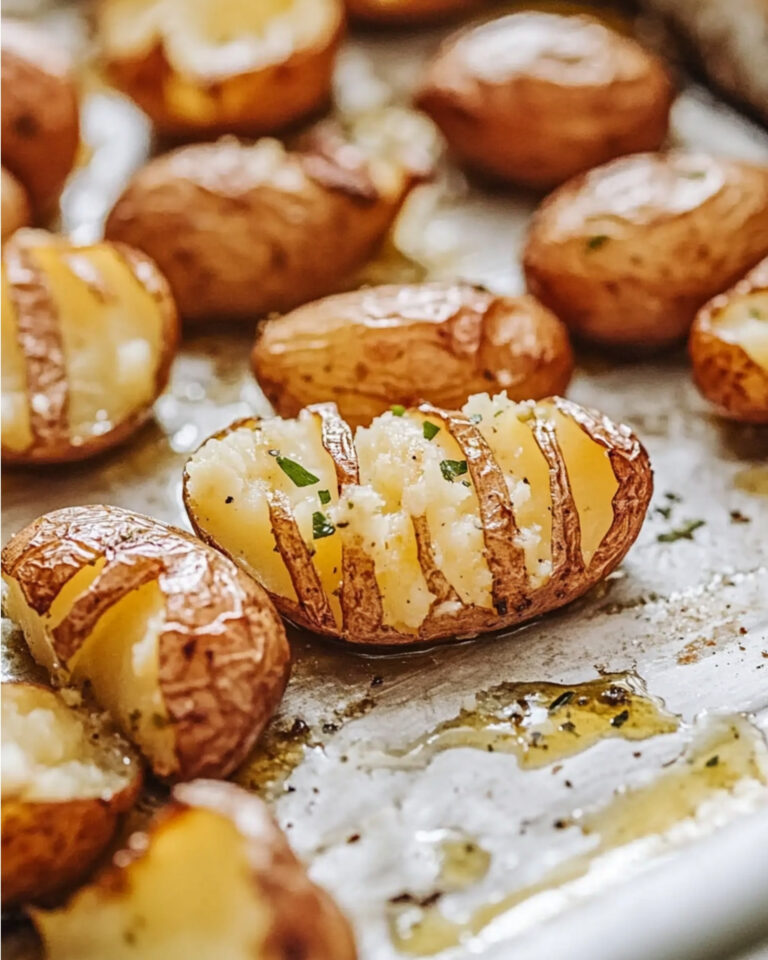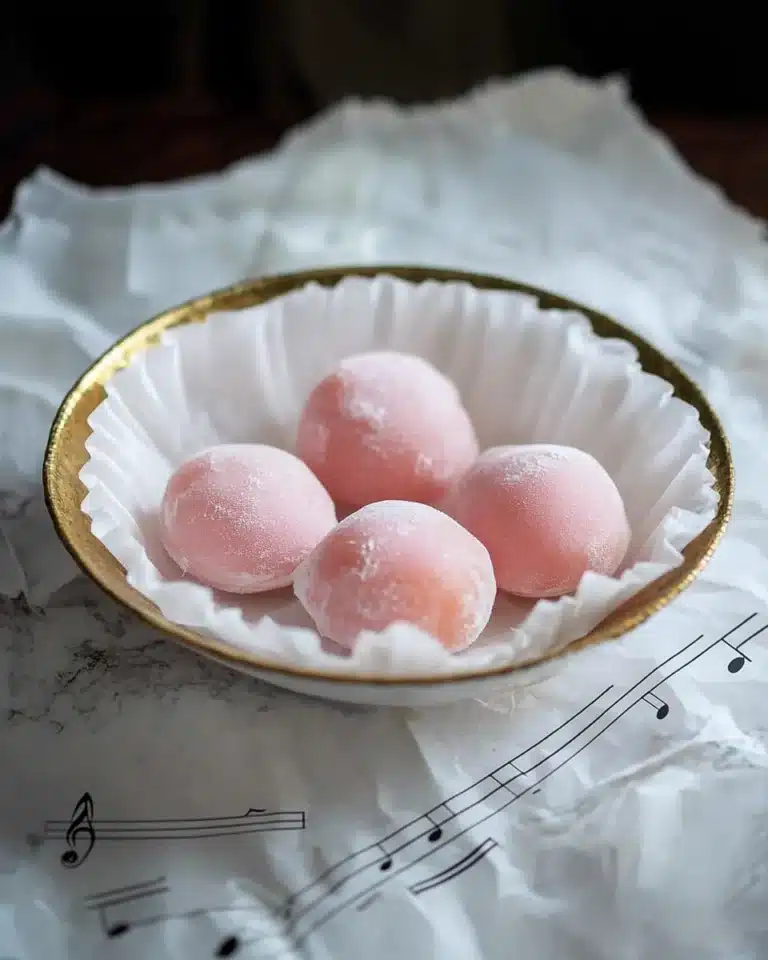If you’re anything like me, the idea of a warm, bubbling lasagne fresh from the oven is pure comfort food bliss. This recipe is simply the BEST homemade lasagne recipe I’ve ever made, and I can’t wait to share it with you. It’s rich, hearty, and full of layers that melt seamlessly together — perfect for family dinners or when you want to impress friends without breaking a sweat.
What makes this simply the best homemade lasagne recipe stand out is the balance of flavors in the ragu and the velvety bechamel sauce that ties everything together. I love how the fresh pasta sheets soak up just the right amount of sauciness without becoming soggy, and because you make it from scratch, you can really customize it to your taste. Believe me, once you try this, you’ll see why my family goes crazy for it time and time again.
Why You’ll Love This Recipe
- Authentic Flavor: The slow-simmered ragu layered with fresh herbs gives you a rich, hearty taste you can’t get from store-bought sauces.
- Creamy Bechamel: Homemade bechamel makes all the difference, creating a silky texture that binds everything perfectly.
- Family Favorite: My family begs me to make this for special occasions — it’s a guaranteed crowd-pleaser.
- Make-Ahead Friendly: Prep the sauces in advance for a stress-free dinner day.
Ingredients You’ll Need
Each ingredient in this simply the best homemade lasagne recipe plays a key role — from the pancetta that adds a subtle smokiness to the fresh herbs that brighten up the flavors. I always pick quality ingredients to get the most delicious result.
- Ground/Minced Beef: I recommend 10-12% fat content for juicy, flavorful ragu without excess grease.
- Pancetta: Adds nice depth; bacon works fine if you can’t find pancetta.
- Celery: Finely diced for that classic soffritto base.
- Carrots: Grated for natural sweetness and texture.
- White Onion: Diced finely to melt into the sauce.
- Garlic: Don’t skimp on this—it builds savory layers of flavor.
- Tomato Puree (Tomato Paste): Concentrated tomato flavor that’s essential for a rich sauce.
- Red Wine: Adds acidity and complexity; I usually pick a dry red.
- Tomato Passata (Pureed Tomatoes): Keeps the sauce smooth and vibrant.
- Beef Stock: Boosts umami and richness.
- Bay Leaves: Infuse the ragu with subtle herbal notes.
- Fresh Basil and Parsley: Dice finely for fresh, herbal bursts distributed throughout.
- Dried Oregano: For that lovely Mediterranean aroma.
- Sugar: Balances acidity—add gradually and taste as you go.
- Olive Oil: Use for frying and to add subtle fruity notes.
- Butter: For the bechamel’s silky base.
- Plain Flour: Turns butter into a roux for thickening the sauce.
- Milk: Use room temperature milk to avoid lumps in the bechamel.
- Nutmeg: Just a hint to add warmth to the bechamel.
- Grated Parmesan: Freshly grated is best for savory depth in the bechamel and topping.
- Fresh Lasagne Sheets: I always prefer fresh; they cook beautifully without getting mushy.
- Mozzarella: Shredded mozzarella melts wonderfully, giving you gooey, stringy layers.
Variations
I love customizing this simply the best homemade lasagne recipe to keep things interesting or to cater to dietary needs. Don’t hesitate to tweak it based on what you have or prefer—this recipe is super forgiving!
- Vegetarian Version: Swap the beef and pancetta for a mix of mushrooms and lentils; I’ve tried this and it’s surprisingly satisfying.
- Spicy Kick: Add a pinch of chili flakes when frying the onion and garlic for a little heat.
- Cheese Variations: Try adding ricotta or swapping mozzarella for provolone for a richer texture.
- Gluten-Free: Use gluten-free lasagne sheets and gluten-free flour for the bechamel; the texture changes but it still tastes amazing.
How to Make Simply The BEST Homemade Lasagne Recipe
Step 1: Sear the Beef and Build Your Base
Start by heating olive oil in a large pot over medium-high heat and add the ground beef. I like breaking it up well with a wooden spoon and seasoning lightly with salt and pepper. Make sure to brown the meat fully — don’t rush this step! Once browned, scoop the beef out into your lasagne dish to make the base layer and discard excess fat. Your ragu will build flavor from here.
Step 2: Cook the Pancetta and Vegetables
Reduce the heat to medium and fry the pancetta until it starts to brown and release a lovely fat. Then add diced onion, celery, and grated carrot — I love how the carrot adds natural sweetness. Cook until the veggies soften and just start to caramelize for that deep flavor. Stir in garlic for a minute, then add your tomato puree. Frying the puree intensifies its flavor, so don’t skip this.
Step 3: Deglaze and Simmer the Ragu
Pour in the red wine to deglaze, scraping up those tasty brown bits from the pan. Let it reduce for a few minutes, then return the cooked beef to the pan. Add beef stock, tomato passata, herbs, bay leaves, sugar, salt, and pepper. Bring it all to a simmer, then cover with a heavy lid and let it bubble gently on low heat for at least 1 hour 30 minutes. Check occasionally and stir to avoid sticking.
Step 4: Reduce the Sauce
After all that lovely simmering, remove the lid and cook uncovered for another 20-30 minutes to thicken the ragu. You want it rich and not watery — I always taste and adjust seasoning here with salt and pepper. Don’t be shy with seasoning; it makes all the difference.
Step 5: Make the Bechamel Sauce
Melt butter in a pot over medium heat, then whisk in the flour to make a smooth roux. Slowly add room temperature milk while whisking continuously to avoid lumps. I let the sauce simmer for 7-10 minutes until it thickens nicely — it should coat the back of a spoon like a thick cream. Stir in ground nutmeg, freshly grated Parmesan, salt, and pepper, then remove from heat.
Step 6: Assemble Your Lasagne Layers
Preheat your oven to 350°F (180°C). In your baking dish, spread a spoonful of ragu to stop the pasta from sticking. Then build your layers: start with pasta sheets, add ragu, then bechamel, then shredded mozzarella. Repeat this for 4 layers, finishing with pasta, bechamel, mozzarella, and a sprinkle of Parmesan on top.
Step 7: Bake and Rest
Bake the lasagne for 30-40 minutes until the top turns a beautiful deep golden brown. A few crispy edges add lovely flavor — don’t worry if you see them! Once out of the oven, let it rest for at least 10 minutes. Trust me, this step helps it hold its shape and makes serving a breeze.
Pro Tips for Making Simply The BEST Homemade Lasagne Recipe
- Simmer Patience: Don’t rush the ragu simmering — it’s worth the wait for that depth of flavor.
- Bechamel Consistency: Make sure it’s thick enough to coat the spoon but still pourable; watery sauce leads to soggy lasagne.
- Fresh Pasta Preference: I’ve found fresh sheets give a better texture and easier layering than dried ones.
- Resting Time: Don’t slice too soon — resting helps everything settle for clean slices and perfect portions.
How to Serve Simply The BEST Homemade Lasagne Recipe
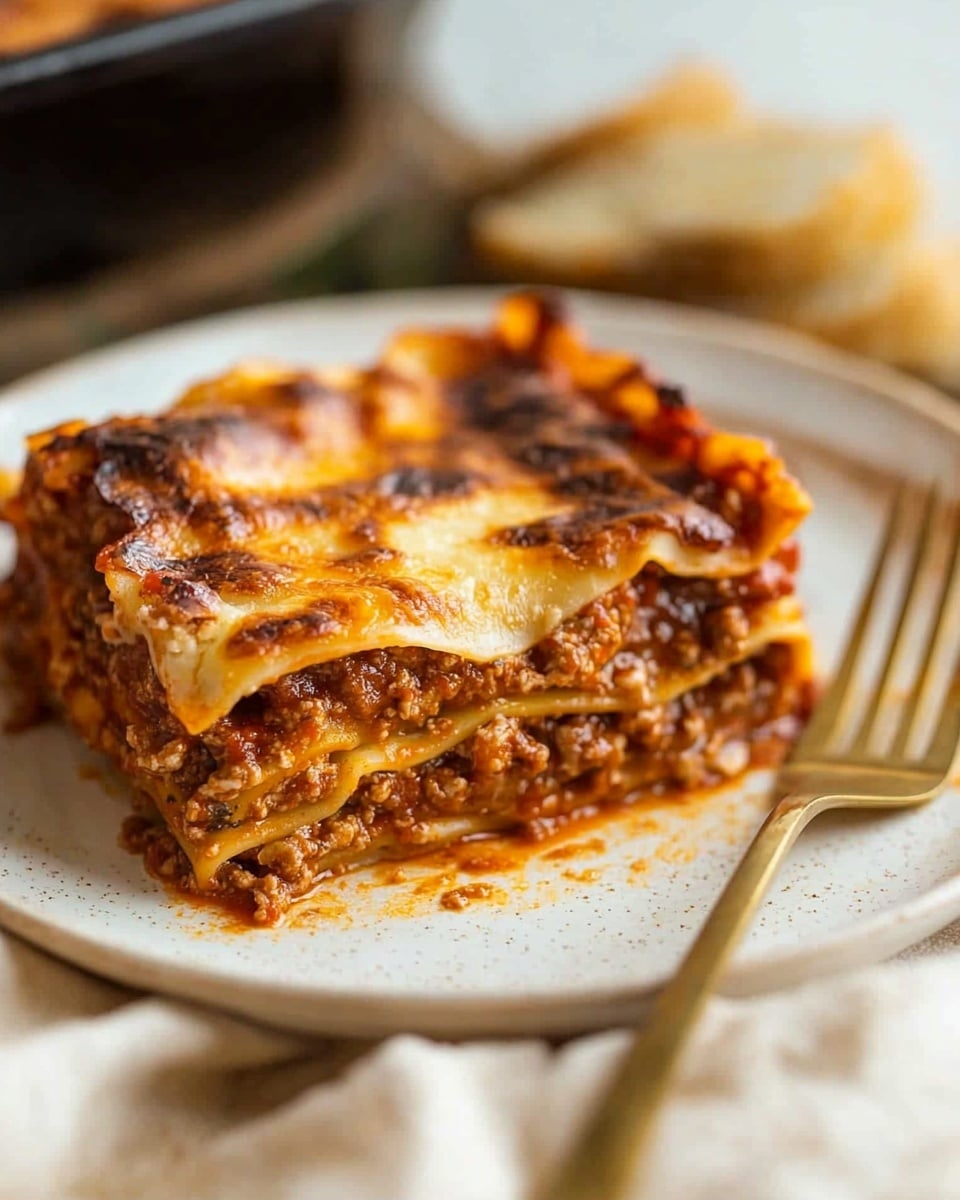
Garnishes
I usually top the lasagne with extra fresh basil or parsley before serving. The bright herbaceous notes add freshness and a pop of color that makes the dish feel lighter and inviting. A sprinkle of extra Parmesan doesn’t hurt either!
Side Dishes
My go-to sides are simple but delicious: a crisp green salad with a tangy vinaigrette or buttery garlic bread. Both complement the rich lasagne perfectly without competing with its flavors.
Creative Ways to Present
For special occasions, I like to serve individual portions baked in mini casserole dishes or even in large ramekins — it makes the presentation feel a little extra and guests love having their own perfect lasagne. You can also add a drizzle of basil oil or a light sprinkle of chili flakes for more flair.
Make Ahead and Storage
Storing Leftovers
I always tightly cover any leftovers and store them in the fridge for up to 3-5 days. It reheats beautifully if you’re careful — just reheat until piping hot, and you’ll barely notice it’s leftover.
Freezing
This simply the best homemade lasagne recipe freezes like a dream. I assemble and bake it, then cut into portions and freeze wrapped tightly. When ready, thaw overnight in the fridge and reheat in the oven, which keeps the texture and flavors intact.
Reheating
I prefer reheating in the oven wrapped with foil at 350°F (180°C) to prevent drying out. If you’re in a hurry, the microwave works — just cover the slice to lock moisture in. Letting it sit a few minutes after reheating helps flavors settle again.
FAQs
-
Can I use dried lasagne sheets instead of fresh?
Absolutely! If using dried sheets, check if they require pre-cooking. If not, reduce how much you simmer the ragu since dried pasta absorbs more liquid, helping avoid a soggy lasagne.
-
How important is resting the lasagne before slicing?
Resting for at least 10 minutes is super helpful. It allows the layers to set, making cutting cleaner and servings prettier without the sauce running everywhere.
-
Can I make this recipe ahead of time?
Definitely! Making it a day ahead is a lifesaver. Just cool the ragu and bechamel completely before assembling and refrigerating. Bring to room temperature before baking for even cooking.
-
What’s the best way to prevent a watery lasagne?
Reducing both the ragu and bechamel sauce thoroughly before assembling is key. Watery sauces lead to sogginess, so patience here pays off big time. The sauce should be thick enough to coat your spoon.
-
Can I substitute ingredients like pancetta?
Yes! If pancetta isn’t available, your finely diced bacon is a perfect stand-in and adds a nice smoky depth without overpowering.
Final Thoughts
This simply the best homemade lasagne recipe has become one of my absolute favorites because it’s approachable yet feels special every time. It’s perfect for cozy nights, family gatherings, or whenever you want to treat yourself to something truly satisfying. I hope you’ll give it a try and find as much joy in making and eating it as I do — trust me, once you make this, lasagne night will never be the same.
Print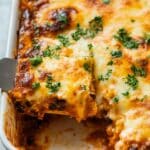
Simply The BEST Homemade Lasagne Recipe
- Prep Time: 30 minutes
- Cook Time: 2 hours 45 minutes
- Total Time: 3 hours 15 minutes
- Yield: 8 servings
- Category: Main Course
- Method: Baking
- Cuisine: Italian
Description
This classic homemade lasagne recipe features a rich, slow-simmered beef ragu, creamy nutmeg-infused béchamel sauce, and layers of fresh pasta and melted mozzarella. Baked to a golden perfection, this comforting Italian dish is perfect for family dinners, with tips to make ahead and store leftovers for ultimate convenience and flavor.
Ingredients
Ragu
- 2.2lb / 1kg Ground/Minced Beef (10-12% fat recommended)
- 3.5oz / 100g Pancetta, finely diced (or finely diced bacon as substitute)
- 2 ribs of Celery, finely diced
- 2 medium Carrots, grated
- 1 large White Onion, finely diced
- 3 cloves of Garlic, finely diced
- 2 tbsp Tomato Puree (Tomato Paste in US)
- 1 cup / 250ml Red Wine
- 2 cups / 500ml Tomato Passata (Pureed Tomatoes in US)
- 2 cups / 500ml Beef Stock
- 2 Bay Leaves
- 1 small bunch Fresh Basil, finely diced (approx 1oz/30g)
- 1 small bunch Fresh Parsley, finely diced (approx 1oz/30g)
- 1 tsp Dried Oregano
- 1.5 tsp Sugar, or to taste
- Salt & Pepper, to taste
- Olive Oil, as needed
Béchamel Sauce
- 4 tbsp Butter (2oz/60g)
- 5 tbsp Plain Flour (2oz/60g)
- 4 cups / 1 litre Milk, at room temperature
- 1/2 small Nutmeg, finely grated
- 1 cup / 80g Freshly grated Parmesan
- Salt & Pepper, to taste
Lasagne Assembly
- 12oz / 350g Fresh Lasagne Sheets
- 2 cups / 200g Mozzarella, shredded
- 1/2 cup / 40g Freshly grated Parmesan for topping
Instructions
- Prepare the Ragu: Heat about 1 tablespoon olive oil in a large pot over medium-high heat. Add ground beef, breaking it up with a wooden spoon, seasoning with salt and pepper. Cook until fully browned, then remove beef and set aside in the lasagne dish, discarding excess fat. Lower heat to medium and add pancetta, frying until browned and fat is rendered. Add onion, celery, and carrot, frying until softened and lightly browned. Stir in garlic and cook for another minute. Add tomato puree and fry for 2 minutes. Deglaze with red wine and let reduce for a few minutes. Return cooked beef to the pot. Add beef stock, tomato passata, parsley, basil, oregano, bay leaves, sugar, salt, and pepper. Bring to a simmer, cover with a heavy lid, and cook on low for at least 1 hour 30 minutes, stirring occasionally. Remove lid and simmer another 20-30 minutes to thicken. Adjust seasoning to taste, ensuring a rich, thick consistency.
- Make the Béchamel Sauce: In a medium pot, melt butter over medium heat. Add flour and whisk continuously to make a roux. Gradually pour in room temperature milk while whisking to avoid lumps. Simmer for 7-10 minutes until the sauce thickens enough to coat the back of a spoon, slightly thicker than double cream. Stir in grated nutmeg, Parmesan, and salt and pepper to taste. Adjust seasoning and then remove from heat.
- Assemble the Lasagne: Preheat the oven to 350°F (180°C). Spread a few spoonfuls of ragu on the bottom of an 8×12” (20x30cm) baking dish to prevent sticking. Layer pasta sheets, then ragu, followed by béchamel sauce and mozzarella. Repeat this layering process for a total of 4 pasta layers, 4 ragu layers, 4 béchamel layers, and 4 mozzarella layers. For the final top layer: add pasta sheets, then béchamel, then mozzarella and sprinkle with Parmesan.
- Bake: Bake in the preheated oven for 30-40 minutes until the top is deep golden brown with some areas slightly crisped for extra flavor. Remove from oven and let it rest for at least 10 minutes to set and retain its shape.
- Serve: Garnish with extra fresh basil or parsley if desired. Slice and enjoy your rich, comforting homemade lasagne.
Notes
- If pancetta is unavailable, finely diced bacon is a suitable substitute.
- Adjust sugar after simmering and reduction; high-quality tomatoes may not require extra sugar.
- Both ragu and béchamel must be properly reduced to avoid a watery, sloppy lasagne. The sauce should coat the back of a spoon.
- Use an 8×12” baking dish for perfect layering. For smaller dishes, add more layers accordingly.
- Fresh lasagne sheets are preferred for texture and structural integrity. If using dried sheets, check cooking instructions and adjust sauce reduction to compensate for liquid absorption.
- Ground beef with 10-12% fat content provides optimal flavor without excess grease; drain fat if using fattier beef.
- A heavy lid helps properly simmer the ragu by trapping steam and controlling reduction rate.
- This lasagne can be made ahead; cool sauces before assembling, then refrigerate overnight. Bring to room temp before baking for even cooking.
- Store leftovers in the fridge for 3-5 days or freeze for long-term storage. Reheat thoroughly in oven or microwave.
- Calories and nutrition are based on dividing the dish into 8 servings.
Nutrition
- Serving Size: 1/8 of recipe
- Calories: 520 kcal
- Sugar: 7 g
- Sodium: 400 mg
- Fat: 28 g
- Saturated Fat: 15 g
- Unsaturated Fat: 11 g
- Trans Fat: 0 g
- Carbohydrates: 35 g
- Fiber: 4 g
- Protein: 32 g
- Cholesterol: 95 mg

